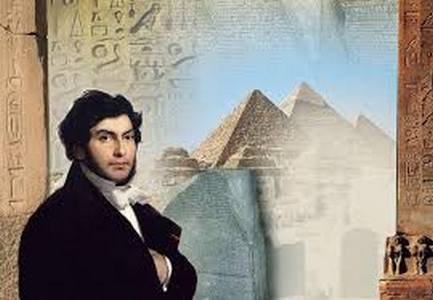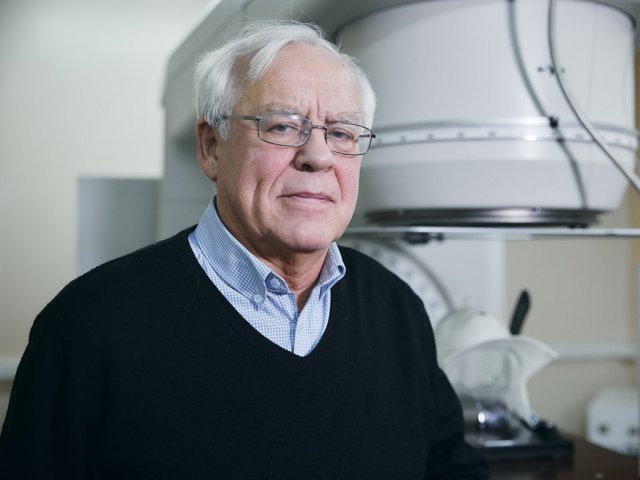Official:
Jean-Francois Champollion. December 23, 1790 – March 4, 1832. French orientalist, founder of Egyptology. Honorary member of Saint Petersburg Academy of Sciences. Rosetta stone decipherer.
Life and Work:
1. It is of interest that the nickname “Egyptian” stuck to Jean-Francois Champollion during his school years because of his oriental appearance. However, he lived up to the nickname – he deciphered Egyptian hieroglyphs and started a new field of knowledge called Egyptology.
2. The future founder of new science was born in the town of Figeac in the South of France in the family of a wealthy book trader. Since the early age he displayed amazing abilities to learn languages and deciphering. It is said that while his mother was reading a formulary to him, he learned the prayers by the ear. Then by comparing the oral and the written versions the boy taught himself to read. His contemporaries claimed that the fantastic memory was Champollion’s feature throughout his life.
3. In 1801, Jean-Batiste Fourier, a famous French mathematician and physicist and the prefect of Grenoble at that time, visited the Central School of Grenoble. There he noticed an 11-year-old boy who freely commanded Latin, Greek and Hebrew. A couple of years later young Champollion mastered Arabic, Syrian, Chaldean, Coptic, Ancient Chinese, and Sanskrit.
4. Champollion’s elder brother Jacques-Joseph took him to Fourier’s house where the future scientist got interested in the collection of Egyptian art. His interest had already been developed as the elder brother wanted to take part in Napoleon’s Egyptian campaign and he got Jean-Francois enthusiastic with his stories of the faraway country.
5. Since his childhood, Champollion had wanted to become world-famous. At the age of 12, he wrote his first book with an insolent title “Chronology from Adam to Champollion.” At the age of 16 he began writing a scientific work “Egypt under Pharaohs.” Four days after the solemn graduation from the Lyceum the young scientist delivered a report “On Geography of Egypt before the invasion by Cambyses” at the Grenoble Academy after which he was immediately elected its full member.
6. Young Champollion spent a couple of years in Paris perfecting his education. There he simultaneously attended College de France and Higher School of Oriental Languages. At the age of 19, the scientist became professor of history at the University of Grenoble.
7. The Champollion brothers were ardent supporters of Napoleon. On June 18, 1815, Champollion the younger published a loyalist article glorifying Napoleon as the only legitimate ruler of France. But the same day Napoleon suffered a defeat at Waterloo, whereas the Bourbons who came to power afterwards closed the University of Grenoble and got the brothers exiled.
8. In exile Champollion continued his research. He exhausted himself compiling the Coptic dictionary. He wrote: “Every day the dictionary is becoming thicker, but its author is getting thinner.”
9. Still Champollion’s major achievement is deciphering the Rosetta stone. The latter was recurrently mentioned in the correspondence between the brothers in spring 1809. On April 21, Jean-Francois wrote to Jacques-Joseph: “You recommend that I study the Rosetta stone inscription. This is exactly what I would like to take up.”
10. For over 13 years Jean-Francois had been trying to read the inscription on the granite slab discovered by Napoleon troops captain when building the fort near the Egyptian town of Rosetta in the western arm of the Nile delta. Ancient tsars came to his help – Ptolemy, Kleopatra, Xerxes. Champollion considered the repeated symbols to be royal names and it turned out he was not mistaken.
11. The work proved extremely exhausting. It is said that once Champollion asked his brother to send him the Chinese grammar book. When his brother inquired why he needed it, Jean-Francois replied that he wanted to have at least some distraction from his work.
12. The shock of his own discovery was so immense that upon crossing his brother’s study and uttering the words “I have succeeded,” Champollion fainted and remained in coma for 5 days.
13. On September 27, 1822, Champollion wrote “A letter to Mr. Dacier, the secretary of the French Academy of Inscriptions, on the phonetic hieroglyph alphabet.” It is this paper that is considered the metric of the newly-born science called Egyptology. The text carved on the Rosetta stone turned out to be gratitude of Egyptian priests who thanked the monarch Ptolemy V in the year 196 AD.
14. In 1824, Champollion’s opus magnum was published under the title “Précis du système hiéroglyphique des anciens Égyptiens, ou recherches sur les éléments premiers de cette écriture sacrée, sur leurs diverses combinaisons, et sur les rapports de ce systéme avec les autres méthodes graphiques égytpiennes.” There the scientist set forth his theory of the Egyptian hieroglyphic scripture and countered his critics who had accused him of plagiarizing.
15. Champollion spent about 2 years studying Egyptian collections in Rome, Naples, Florence, and Turin. Then he established the Egyptian Antiquities Museum, currently it is the famous Egyptian Gallery in the Louvre.
16. It was only in 1828 when Egyptologist Number 1 got to the country that had obsessed his thoughts for several decades. In the letter to his brother the scientist could not help hiding his delight: “… I’ve spent the past 6 months in the midst of Egyptian monuments and I am amazed that I am able to read their inscriptions more fluently than I could possibly imagine.” In Egypt Champollion studied a great number of Ancient Egyptian monuments and inscriptions and totally ruined his health.
17. In 1831, Champollion was appointed professor of Egyptian history and archeology at College de France at the department that was specifically designated for him. The scientist only managed to deliver an inaugural lecture there.
18. The whole city of Paris mourned the premature death of the scientist. He was buried in Pere Lachaise cemetery next to the grave of Joseph Fourier, the very person in whose house young Champollion first saw the objects of his future research interest.
19. The contemporaries claimed that after Champollion’s deciphering the Rosetta stone, there appeared a trend in Paris to send love letters ciphered in hieroglyphs.
20. In Champollion’s hometown of Figeac there is Place of Inscription where a most extraordinary monument was made to the great scientist. The monument reproduces the Rosetta stone. The statue of Champollion executed by Frederic Auguste Bartholdi, the one who created the Statue of Liberty, can be found in the court of College de France. The portrait sculpture depicting Champollion is available in the Louvre.
Photo: https: //clck.ru/RHWqW






















